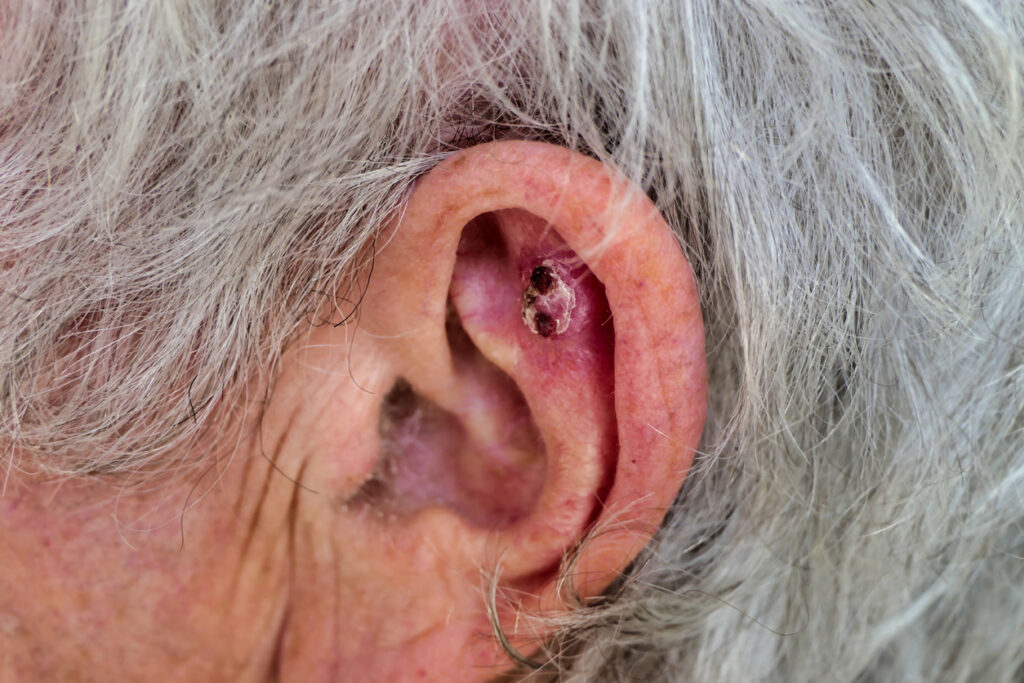Topical calcipotriol plus 5-fluorouracil (5-FU) may prevent squamous cell carcinoma, with benefits lasting five years after treatment, according to a study in the Journal of Clinical Investigation.
The immunotherapy agent activates specific components of the adaptive immune system, particularly CD4+ T helper cells, which are not known to be involved in traditional cancer treatments.
“One of the unique challenges with squamous cell carcinoma is that individuals who develop it are at an increased risk of developing multiple new lesions over time. This makes prevention an essential part of care,” says corresponding study author Shawn Demehri, MD, PhD, of the Department of Dermatology and the Krantz Family Center for Cancer Research at Massachusetts General Hospital, a founding member of the Mass General Brigham healthcare system in Boston, MA. “We found that this drug combination prevents cancer through a mechanism distinct from those used by current immunotherapies, suggesting that these drugs may treat and prevent cancer via distinct mechanisms.”
Recently, researchers found that using a vitamin D analog (calcipotriol) combined with chemotherapy (5-FU) can eliminate precancerous spots and prevent cancer occurrence via activating the patient’s own immune system; yet, prior to this trial, the mechanism remained unclear.
Dr. Demehri’s team conducted an open-label clinical trial to investigate the mechanism of calcipotriol plus 5-FU immunotherapy. Eighteen patients with qualifying precancerous skin lesions were enrolled. Participants applied a treatment of 0.0025% calcipotriol and 2.5% 5-FU to affected areas—including the face, scalp, and upper extremities—twice daily for six days. They were evaluated in the clinic and underwent skin biopsies before treatment, one day after completing the regimen, and again eight weeks post-treatment.
The treatment successfully eliminated 95% of precancerous spots on the face and removed all facial lesions in 7-of-10 patients. The therapy cleared 82% of spots on the scalp and 65 and 68% on the right and left upper extremities, respectively. Side effects included some redness and inflammation around spots that the drug eliminated, but all skin reactions resolved within four weeks of treatment. Notably, healthy skin appeared unaffected by this immune response to the drug.
Researchers studied skin biopsies under the microscope to understand the drug’s mechanism, finding high CD4+ T cell activity at sites where precancerous lesions were removed. They evaluated the drug’s long-term success by continuing to collect skin biopsies from participants over five years after the trial, finding that the immunotherapy’s effects persisted.
To better understand the drug’s mechanism, Dr. Demehri’s lab created a mouse model, inducing tumor development before treating the mice with the trial immunotherapy. They found that the treatment significantly delayed tumor onset and reduced tumor counts, and that these effects appeared dependent on CD4+ T cell activity.
This study focused on evaluating the long-term efficacy and mode of action of this immunotherapy in patients with competent immune systems. Dr. Demehri is currently working on a multi-center clinical trial to evaluate whether immunocompromised individuals, such as organ transplant recipients at higher risk for skin cancer, would experience similar benefits. Dr. Demehri and colleagues are also exploring how the mechanism identified in this trial could be employed by other immunotherapies to prevent additional forms of cancer, such as oral, breast, or anal cancer.


